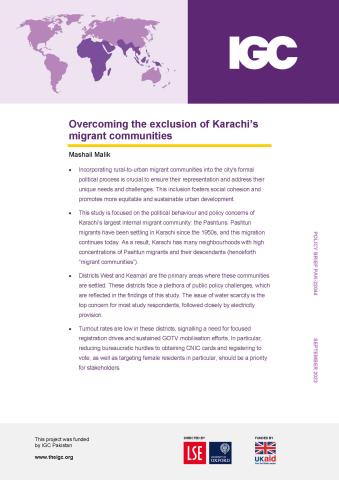Overcoming the exclusion of Karachi’s migrant communities
This study is focused on the political behaviour and policy concerns of Karachi’s largest internal migrant community: the Pashtuns.
-
Malik Policy brief September 2023
PDF document • 169.13 KB
- Incorporating rural-to-urban migrant communities into the city's formal political process is crucial to ensure their representation and address their unique needs and challenges. This inclusion fosters social cohesion and promotes more equitable and sustainable urban development.
- This study is focused on the political behaviour and policy concerns of Karachi’s largest internal migrant community: the Pashtuns. Pashtun migrants have been settling in Karachi since the 1950s, and this migration continues today. As a result, Karachi has many neighbourhoods with high concentrations of Pashtun migrants and their descendants (henceforth “migrant communities”).
- Districts West and Keamari are the primary areas where these communities are settled. These districts face a plethora of public policy challenges, which are reflected in the findings of this study. The issue of water scarcity is the top concern for most study respondents, followed closely by electricity provision.
- Turnout rates are low in these districts, signalling a need for focused registration drives and sustained GOTV mobilisation efforts. In particular, reducing bureaucratic hurdles to obtaining CNIC cards and registering to vote, as well as targeting female residents in particular, should be a priority for stakeholders.



